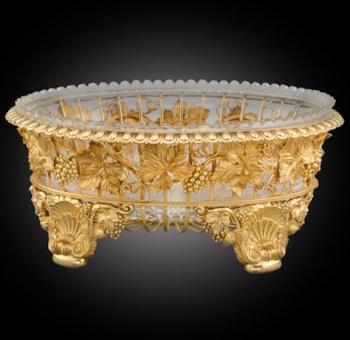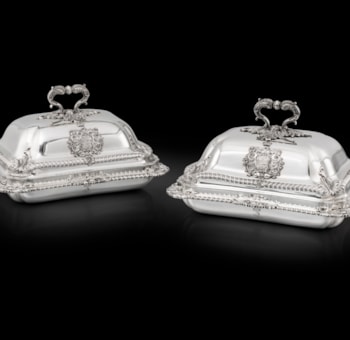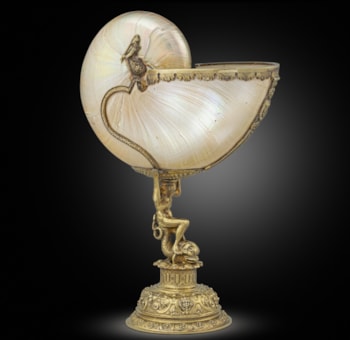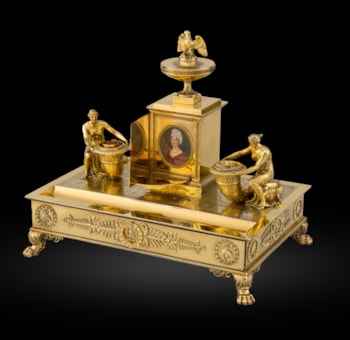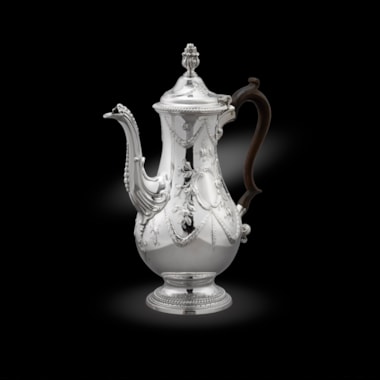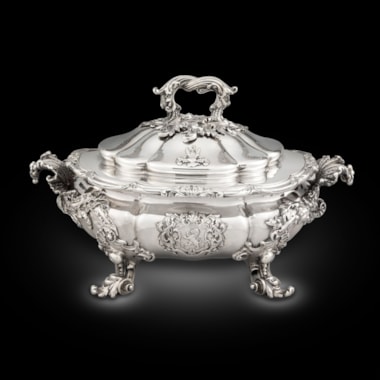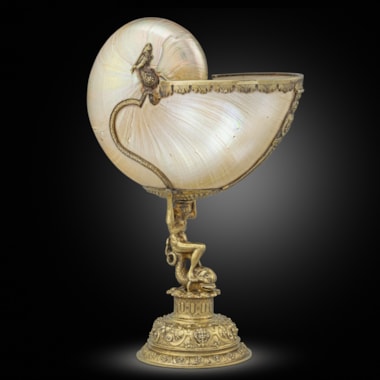THE BULTEEL JOHN WHITE COMMISSION
The Jug part of an important suite of silver made by John White in 1720. It included a pair of tazze, a pair of octafoil salvers and a larger tazza. It is thought the suite belonged to James Bulteel M.P. of Fleet Damerell, Devon, who married Mary Crocker, daughter and heiress of Courtenay Crocker of Lyneham in 1718. The silver descended in the Bulteel family until it was sold at Christie's, London, on 14 December 1911, lots 55B, C, D, and H. The initials ICB found on the base of the jug are likely to have been engraved for the son of James and Mary Bulteel, James Courtenay Bulteel (1720-1746), or possibly for John Crocker Bulteel (d.1843) who served as M.P. for Devonshire, and married Lady Elizabeth Gray, 2nd daughter of Charles, 2nd Earl Grey.
The three octafoil salvers that descended in the Bulteel family share the same coat-of-arms, motto and engraved initials as the present lot, and are now in the collection of the Ashmolean Museum, Oxford, illustrated in Timothy Schroder's scholarly three volume catalogue of the collection, British and Continental Silver in the Ashmolean Museum, Oxford, 2009, pp. 242-244, cat. no. 87. The pair of tazze, whereabouts unknown, were also presumably engraved with the Bulteel arms and initials (see A. J. H. Sale and V. Brett, 'John White: Some Recent Research', Silver Society Journal, Autumn 1996).
JOHN BULTEEL M.P.
John Bulteel was a Tory lawyer of French Protestant ancestry. He worked as a legal advisor for several landed families in Devon. In 1701, he ran for the seat in parliament for Tavistock, but was not successful. However, he won the election in November 1703 without any opposition. He was regarded as a Low Church member of parliament and opposed the Court candidate for Speaker. Bulteel was a member of the October Club and one of the worthy patriots who exposed the mismanagement of the previous administration. He was appointed twice to the commission for the resumption of King William's grants. Bulteel also voted in favour of extending the charter of the East India Company. He was appointed as a commissioner of public accounts in 1714. Bulteel was identified as a Tory on the Worsley list and retired from the House of Commons after the dissolution. In 1716, he inherited Flete House and other Devon estates from John Modyford Hele. Despite being listed as a dubious Jacobite sympathizer in a document sent to the Pretender in 1721, he died in 1757. His will leaves all his household goods, including his plate, to his eldest son.
James Bulteel M.P. (b.c.1676-1757) of Fleet Damerell, co. Devon, then by descent to,
Lionel Bulteel (1860-1954) of Plympton, co. Devon.
A Lady [Lionel Bulteel]; Christie's, London, 13 December 1911, lot 55B (£161 to S. Gall).
A Lady; Christie's, London, 13 July 1914, lot 133 (to Harman).
Anonymous sale; Christie's, New York, 20 April 2000, lot 271.
Son of Christopher White of Wasreham in the County of Dorset apothecary, apprenticed to Robert Cooper 8 September 1711 on payment of £35.5s. Free 3 December 1719. First mark entered as a large worker, 10 December 1719. Address: Corner of Arundel Street, Strand. Second mark, 4 January 1725. Third mark, 26 June 1739. Address: Corner of Green Street near Leicester Fields. Heal records him as plateworker, Golden Cup, Arundel Street, Strand, 1719-1724; goldsmith, London, 1720-33;m and plateworker, Green Street, 1739. He also has John White, goldsmith, London, 1772, who may be the same but nothing with his mark is found this late. However one of the name was elected to the Livery March 1758 and Court February 1763 warden 1778-80 and Prime Warden 1782, dying 9 May 1789. If the latter is identical with the goldsmith above, he must have been in his nineties at his death. White is a mysterious figure, as his work, somewhat rare, is of high quality and Huguenot character, without there being any apparent connection in his training or parentage with the immigre school. He either was, or employed a particularly fine engraver who made considerable use of grinning masks of Hogarthian type in the cartouches enclosing coats-of-arms and in strapwork borders.
You May Also Like







